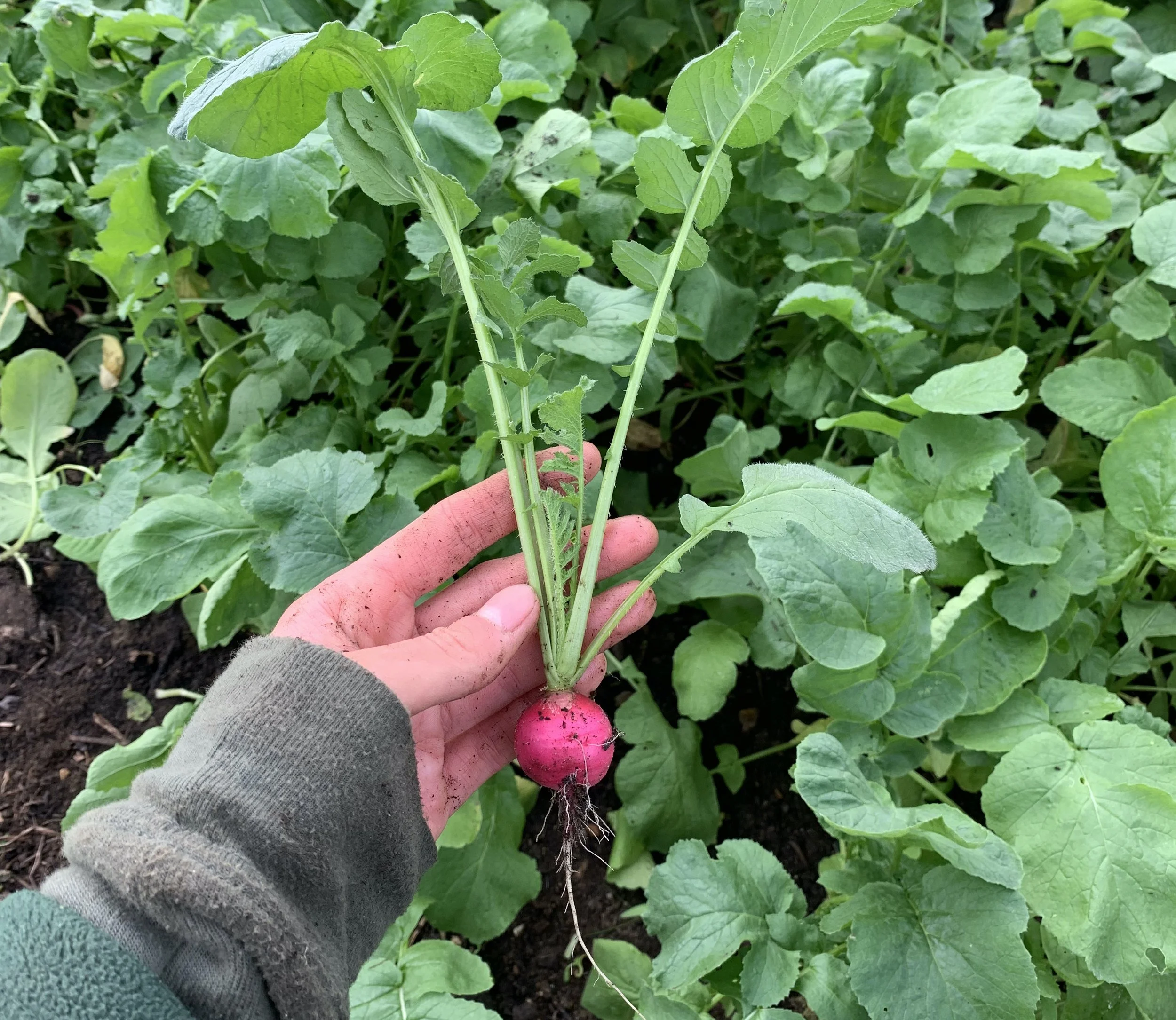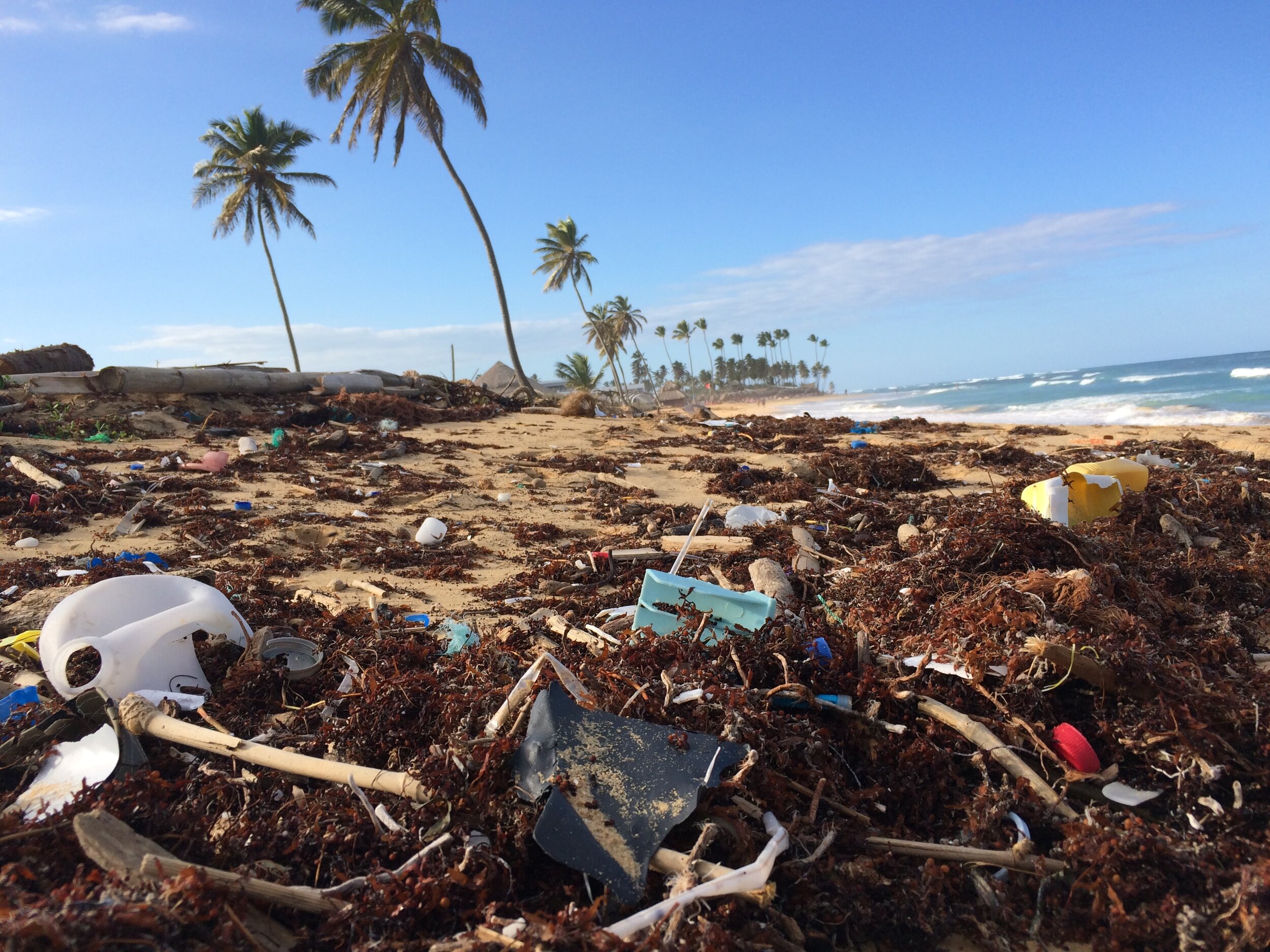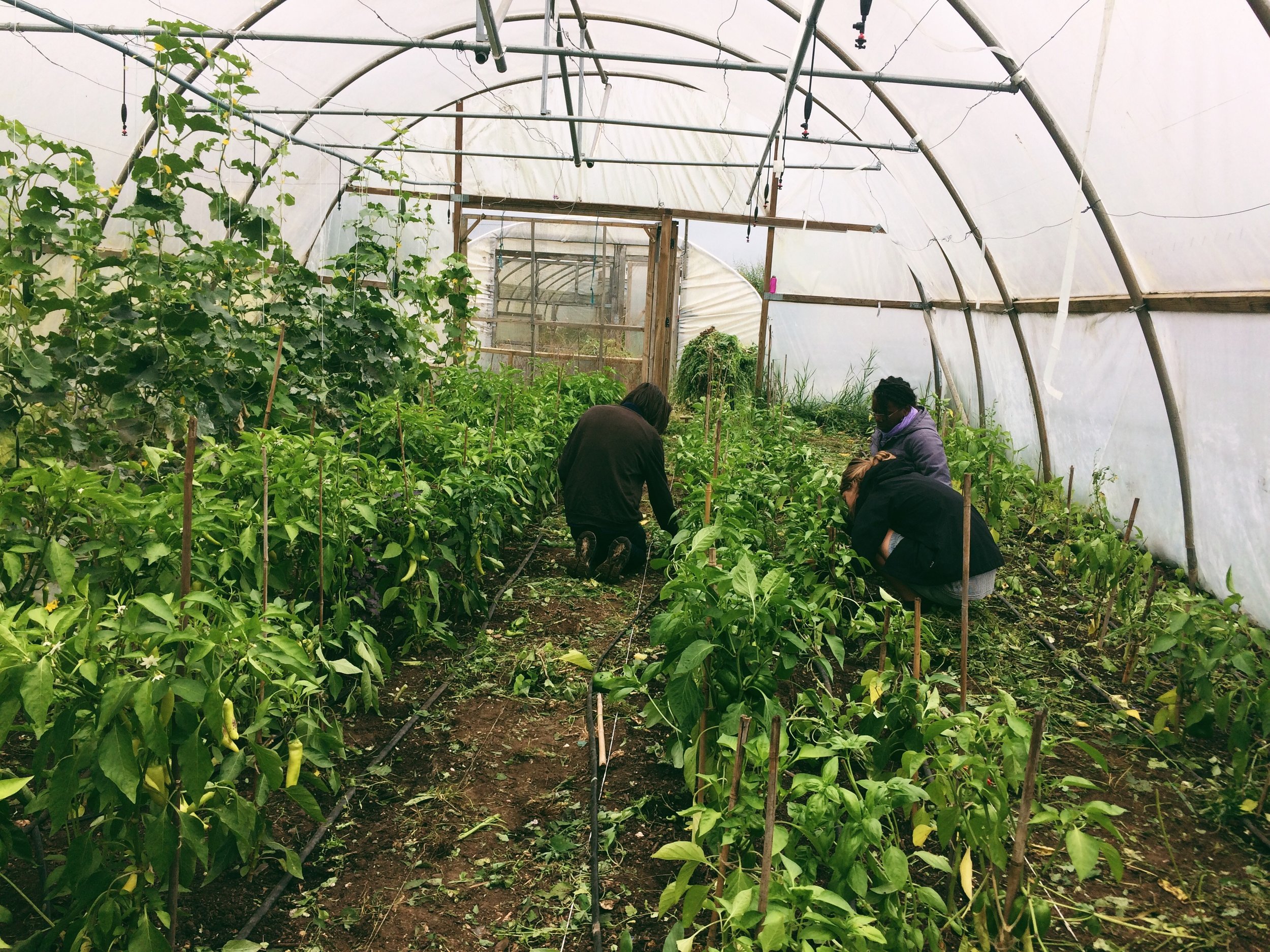I remember the first time I went blackberry picking. With an empty bag, I set off on a quest to trawl the hedgerows for these mysterious, juicy gems. Sometimes the fruit would pop between my fingers and the molasses-coloured juice would trickle down my palm. The richness of the taste, scent and colour of these foraged berries made me feel nourished each time I popped one in my mouth on the way home. There is an inherent knowledge in humans that generally associates colourful food with health. Whether it’s the deep green of cavolo nero, the crimson blush of tomatoes or the stain that’s left on your fingertips by fresh beetroot – research shows that there are plenty of positive implications for our health, food system, and global food security from growing and eating a diverse spread of wild and cultivated foods.
Our current experience of food is one of seeming diversity. We can eat any manner of cuisine from far-flung places across the globe without even leaving the house – from coconut milk, lemongrass, and Brazil nuts to mango, chia seeds, and Himalayan pink salt. However, while we have greater access to a global food supply, we have lost 75% of genetic plant diversity in modern agriculture since 1900 [1]. What humans eat has changed more in the last 150 years (around six generations) than it has over the course of the last one million (40,000 generations) [2]. According to a report from WWF, over 70% of the food we eat comes from only 12 plant sources and five animal sources [3]. While our hunter-gatherer ancestors were eating 6,000 different plant species, we currently only eat around nine. Three of which – rice, wheat, and maize – make up 50% of all calories [4].
Why does this matter?
Food Security and Food Diversity
Imagine if you owned a forest filled with ash trees. One day you notice a change in your trees and come to realise that ash dieback – a fungal disease that kills European ash trees – is spreading through your woodland. By simply relying on one species of tree, that is now under serious threat, your forest is less resilient when disease spreads. However, if your forest were filled with oak, beech, birch, ash, hawthorn, Scots pine, and alder – a diverse range of tree species – when the ash dieback threatens your ash trees, you’d have other healthy trees in your forest to keep it strong. The same applies to food. Eating a diverse range of foods is one of the ways that we humans have been able to sustain ourselves on this planet for as long as we have. However, over the last 150 years or so our food system has depended more and more on monocultures – the farming of a single crop in a given area [6] – and in turn, the diversity and food security within our food system has rapidly declined.
While our access to food seems abundant, many of the foods we eat come from only a small handful of sources, as Dan Saladino explains in his book, Eating to Extinction:
‘Half of all the world’s cheeses are produced with bacteria or enzymes manufactured by a single company; one in four beers drunk around the world is a product of one brewer; from the USA to China, most global pork production is based around the genetics of a single breed of pig; and […] although there are more than 1,500 varieties of banana, global trade is dominated by just one, the Cavendish, a cloned fruit grown in monocultures so vast their scale can only be comprehended from the view of an airplane or by satellite [7].’
We cannot realistically sustain ourselves as a global community by relying on monoculture crops. Facing the unpredictability of climate change without diverse food sources won’t be sustainable when we are dealing with extreme conditions. Additionally, global food security has recently been shaken by the impact that the war in Ukraine has had on our global food supply. Ukraine exports 10% of the world’s wheat, 14% of corn, 17% of barley, and 51% of the world’s sunflower seed oils [8]. In May 2022 the Russian Navy closed a number of vital Ukrainian ports on the Black Sea, disrupting global trade networks. Our current food system is dependent on general global stability to function; however, we need a food system that is resilient in the face of imbalance. By being more locally-focused and less dependent on global trade networks, we can strengthen our food systems from the local level outwards.
Additionally, when Covid-19 hit there was a huge increase in people buying from their local food producers directly – supermarkets couldn’t handle the strain of demand (during the first wave in the UK, especially). Small businesses run by local people flexibly and quickly responded to the needs of their communities, with many producers changing their business models overnight to supply homes instead of restaurants. As both the pandemic and the current war in Ukraine demonstrate, increasing the diversity of food sources in supply chains is growing ever more important.
Human Health and Food Diversity
As stated previously, our ancestors were eating around 6,000 different plant species. Nowadays, consuming a variety of 20+ plant-based foods each week is generally seen as having a diverse diet. The rapid shift to our current modern way of eating – over the last 150 or so years – has had a significant impact on our overall health. An examination of fossils of cavemen before and after the introduction of agriculture into our societies showed that malnutrition (shown through dental carries, short stature, and infant mortality) greatly increased with agricultural developments [9]. As we farmed more we foraged less and the diversity of our diets decreased greatly leading to greater malnutrition. This decline has been made a lot worse by our dependence on monoculture foods.
There are still modern-day groups such as the Hadza in Northern Tanzania, who consume a hunter-gatherer diet consisting largely of food from the earth and wild animals. The Hadza, and similar groups, have been shown to have greater overall health and few of the diseases that are now common in modern-day societies [10]. Additionally, societies that rely on our modern food and farming systems can learn from the practices of Indigenous societies across the globe that still farm as their ancestors did. Agroecology and regenerative farming methods are not new – they come from the wisdom and practices of indigenous groups and their ancestral food systems. Research from the Food and Agriculture Organization for The United Nations (FAO) has shown that Indigenous food systems are rich in biodiversity and nutrition and are climate-resilient and low carbon [11]. With a focus on growing a mix of locally adapted indigenous and traditional crops with wild foods, they have access to a diverse array of foods that are locally grown with a focus on land stewardship. Equally important to the diversity of foods grown is how they are grown – not in vast monocultures, but on small-scale, community-focused farms without the use of additional chemicals that deplete the soil.
Additionally, recent research around food diversity has also focused on gut health. Our guts have become much more of a concern in recent years, with the gut being labeled as ‘the second brain’. Recent research has shown that the more diverse our diet, the healthier our gut microbiome is. Tim Spector, an epidemiologist and professor at King’s College London, has done numerous studies into gut health. He states that having a diversity of plant foods in your diet increases the diversity of your gut microbes that lead to “a healthier immune system and a better metabolism [12].” His recent ZOE Covid Symptom Study, in which people logged their covid symptoms in order to track how Covid spreads, found that those who consumed a more diverse diet of plant-based foods pre-pandemic were less susceptible to catching covid-19 [13].
Furthermore, studies suggest that there is a link between the health of our guts and our mental health. What is now called ‘the gut-brain connection’ is the link between our central nervous system (the brain) and our enteric nervous system (the gut). This connection is the reason our mouths water when we’re hungry and we might get stomach cramps when anxious. A 2018 study investigated whether people’s mental health improved when given specific probiotics to target certain strains of bacteria that were lacking in their gut microbiome. The study found that “probiotic consumption improved psychological or biological measures of depression, anxiety, or stress in individuals predisposed to a mood disorder. Probiotics suppressed biological markers of stress in healthy individuals in a strain-dependent manner [14].” It can be assumed then that introducing fermented foods – with natural probiotics – into our diets is one way in which diversifying our diet could lead to better mental health. If our gut health is improved by eating a diverse array of foods, and this could lead to greater happiness and health, then that is a great reason to support a food system that doesn’t depend on only a handful of monoculture crops to feed the world, but grows a diverse range of plant foods that could positively impact our health and happiness.
What can we do?
Widespread food system change is largely in the hands of consumers. While we have grown quite used to eating a small variety of foods and seeing miles of fields growing the same crops, this shouldn’t be the norm. The resilience of our food systems, communities, bodies, and minds would be greatly impacted by a shift to growing and eating more diversely. Regenerative farming offers a solution as it encourages farming a diverse range of crops without the use of chemicals. As eating food grown regeneratively becomes more normalised, prices will be pushed down and this way of growing and eating will become more accessible to those who can’t currently afford it.
Agroecology – a term often used interchangeably with ‘regenerative’ – is defined as ‘the application of ecological concepts and principles in farming’. If our global farming systems put ecological health at the forefront of their agenda, it would benefit us all greatly. Recent studies suggest that organic food production is up to the task of feeding our growing populations [15] and regenerative/agroecological farms across the world are showing that food system change can start locally and have a global impact. Supporting regenerative farms as a consumer is a way that we can make our food systems more resilient while supporting local producers and strengthening communities. Additionally, educating ourselves on wild foods in our local environment is also a great way to diversify our diets - John Wright’s Book ‘The Foragers Calendar’ is a great resource for beginner foragers in the UK. Whether our desire is to improve our health, strengthen our communities or create more resilience in the face of climate change, increased diversity in what we grow and eat is key.















